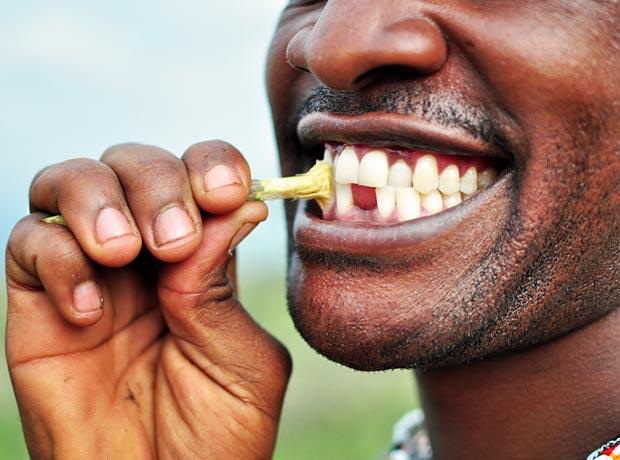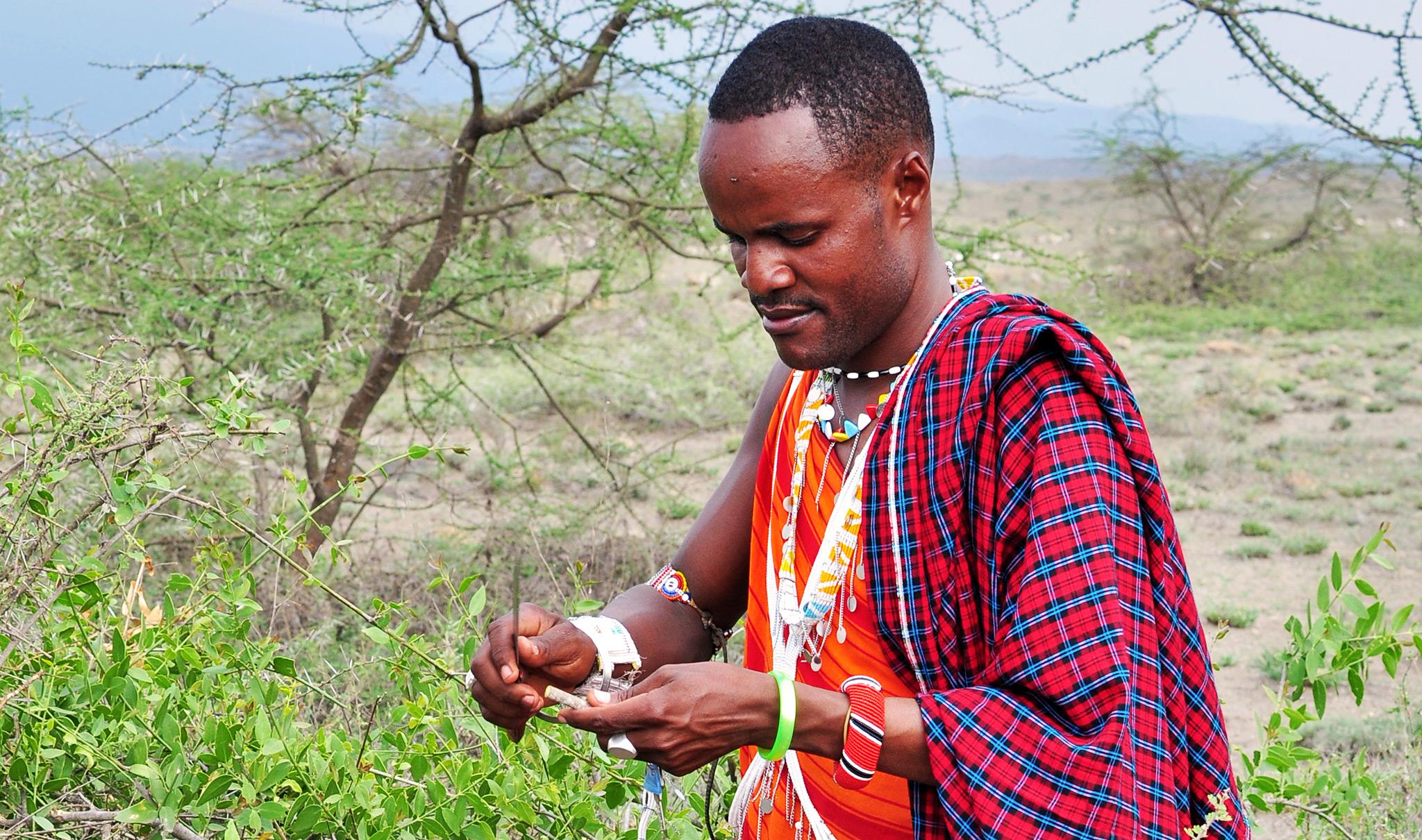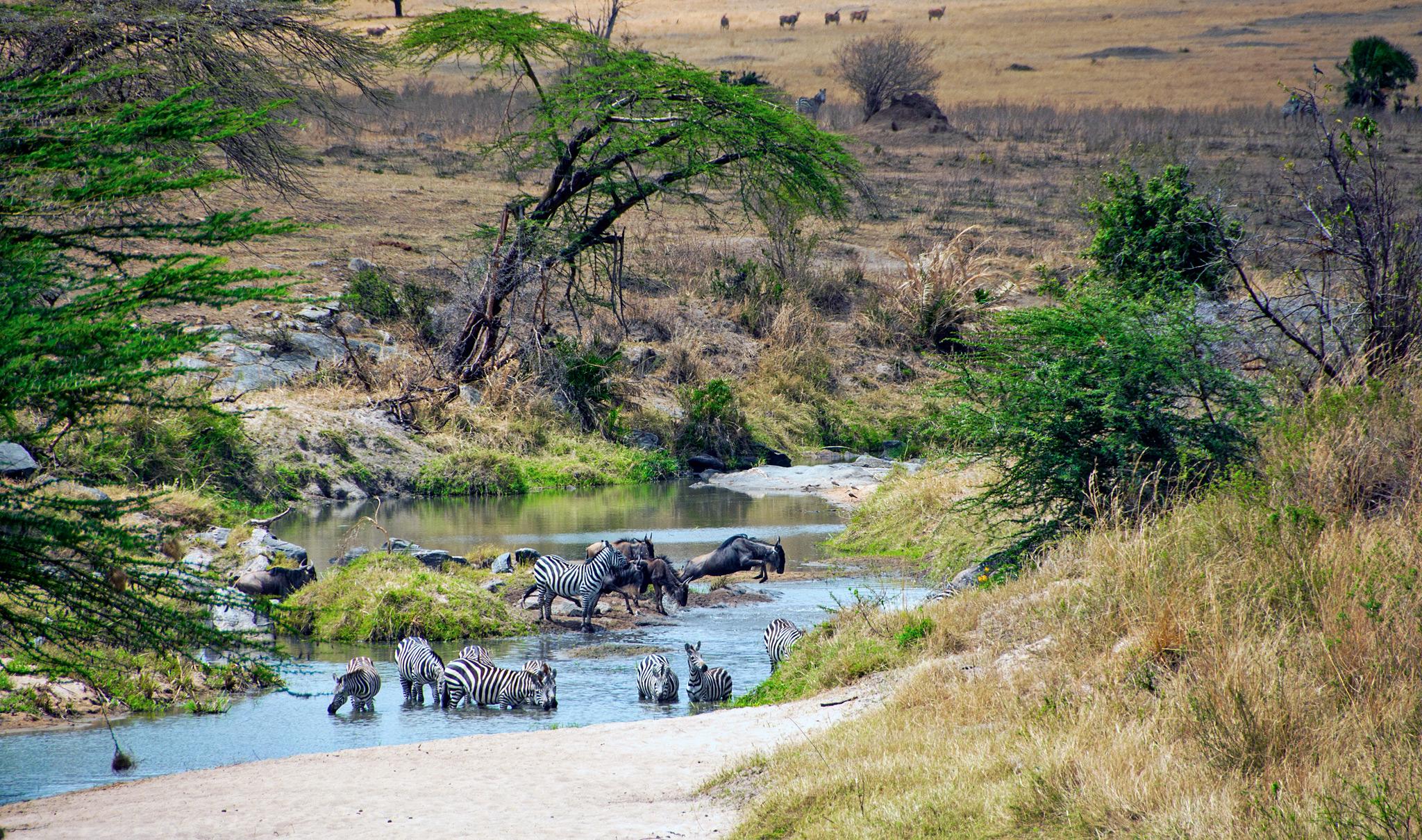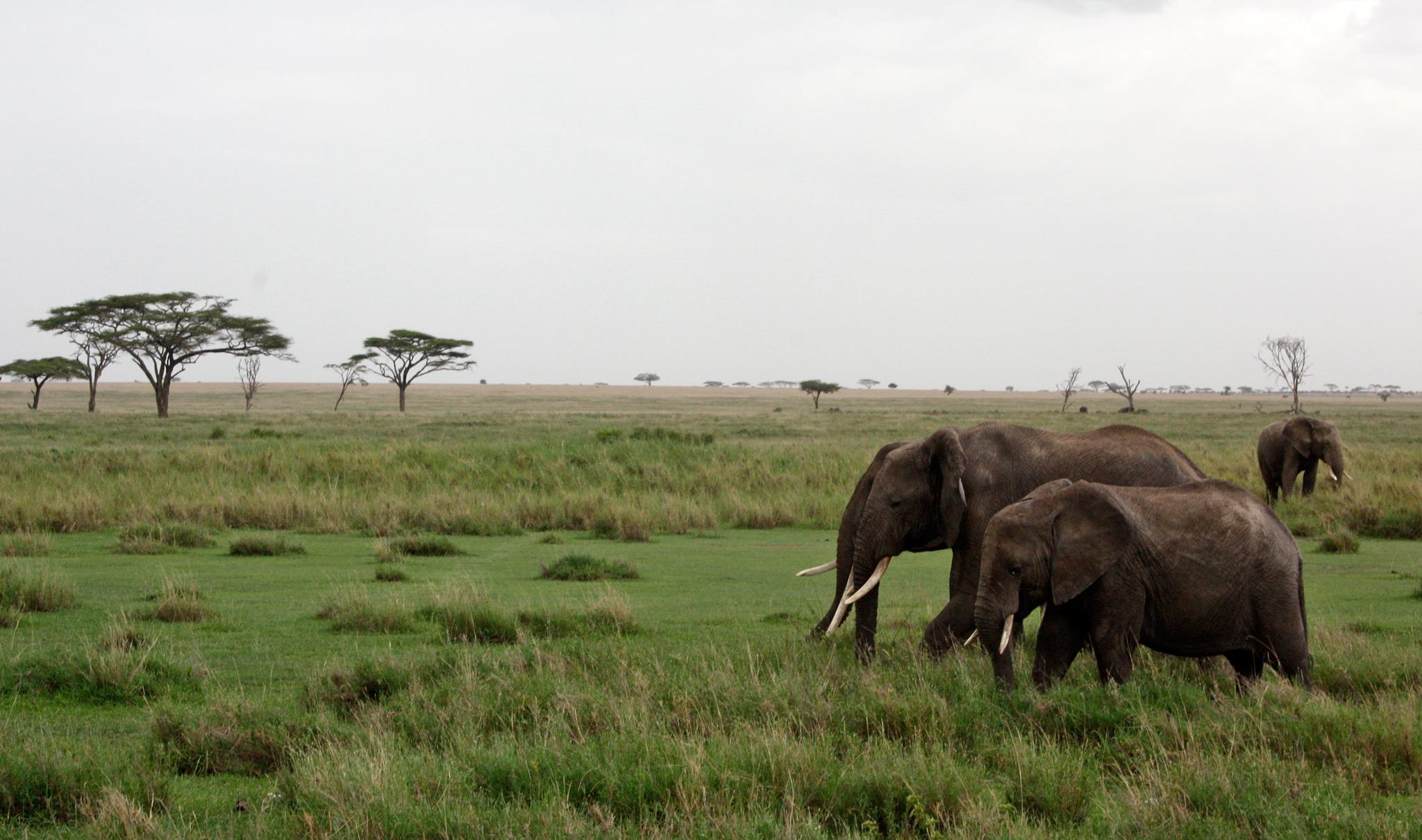Modern toothbrushes come in all different shapes, sizes and colours, but how did traditional tribes like the Maasai keep their teeth clean before all this technology? Having an in depth knowledge of the bush is a normal thing for the Maasai. Back in the days when medicine was not readily available, people learnt to use what nature provided to treat ailments.
Recently whilst out on a bush and nature walk with a Maasai guide in the West Kilimanjaro region, we learnt something about the Maasai’s traditional medicine…

At a small shrub, our guide took out his knife and started cutting some pencil-like pieces off the stem. He carefully cleaned a few centimetres of the bark from one side and handed it to us. We all looked at each other, a little bit confused about what to do with these sticks. With a smile on his face he started to chew on the stick. After some biting, twisting and turning, our guide showed us a perfectly formed tooth brush!

Salvadora persica, is also known as the ‘toothbrush tree’ is a low shrub, sometimes a small tree that grows in dry bushland and wooded grasslands. It is an evergreen shrub with characteristic long arching shoots and has many uses both medicinal and as fodder. The leaves can be eaten as a salad or also used as traditional medicine for coughs, asthma, rheumatism and other diseases. Flowers are used as a mild laxative and the fruit, although small, can be eaten fresh or dry.
A decoction of the roots is taken as an antidote for gonorrhoea, spleen pain and stomach aches while latex from the bark is used to treat skin sores.
Our guide told us that the juice you get after boiling the roots is also a good remedy for ‘cleaning your body’. He advised us if we ever take it we should sleep with only a blanket on because ‘everything comes out’!
The stem is what makes this tree famous, yielding the chewing sticks that contain an antibiotic that keeps your mouth clean and also prevents toothaches. It was also found to contain active compounds which reduce decay, gum disease and plaque. Our guide said it also keeps your teeth white as the snow on Kilimanjaro.
As Westerners we tend to brush our teeth for a few minutes at night, but the Maasai brush for up to 10 minutes at a time. The chewing sticks are small and easy to transport which means it’s always handy when you need it.

So next time you go on safari just leave your modern toothbrush at home and ask a Maasai to make you a traditional one?






Hello Taher!
I found your post when I was looking up the same plant! 🙂 I studied abroad in Kenya back in 2002, and in my field book notes, it’s referred to as “nyethe” (sp-?), the toothbrush shrub. We were up in the northern desert area, east of Lake Turkana, in Ileret. A local Dassanatch man took us on an ethnobotanic tour.
Do you know if they refer to this plant by some other name in Tanzania?
Thanks and keep up the great work!
~Elaine
Hello Elaine,
that is great. Among Swahili speaking people it is also referred to as “Mti wa mswaki” literally the Toothbrush tree.
I hope that helps!
Where can you get som of this??
Hello, May you inform me about where to find the “toothbrush tree” for order or nearby
Please let me know to find this. my email is [email protected]
yum